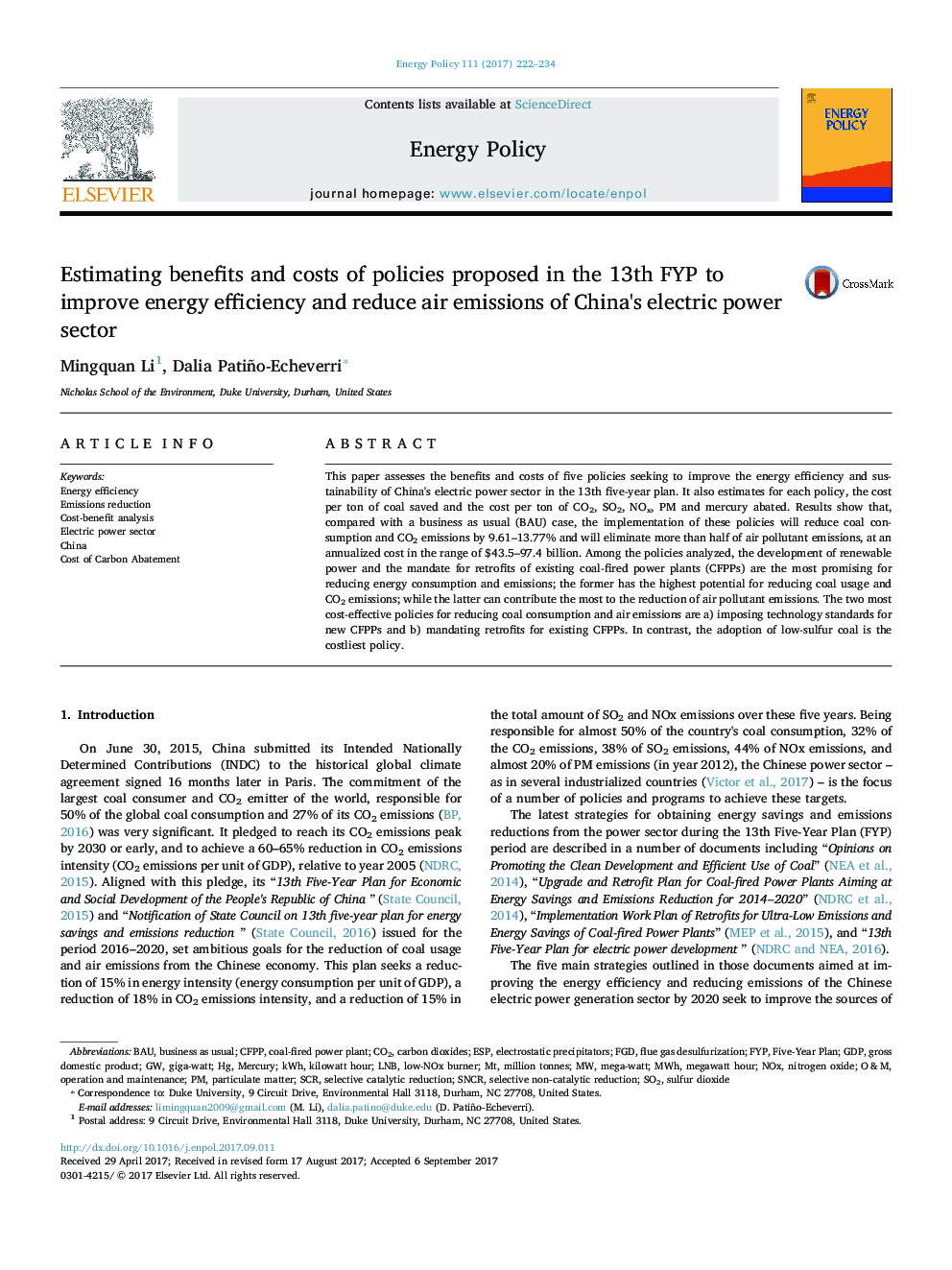| Article ID | Journal | Published Year | Pages | File Type |
|---|---|---|---|---|
| 5105507 | Energy Policy | 2017 | 13 Pages |
Abstract
This paper assesses the benefits and costs of five policies seeking to improve the energy efficiency and sustainability of China's electric power sector in the 13th five-year plan. It also estimates for each policy, the cost per ton of coal saved and the cost per ton of CO2, SO2, NOx, PM and mercury abated. Results show that, compared with a business as usual (BAU) case, the implementation of these policies will reduce coal consumption and CO2 emissions by 9.61-13.77% and will eliminate more than half of air pollutant emissions, at an annualized cost in the range of $43.5-97.4 billion. Among the policies analyzed, the development of renewable power and the mandate for retrofits of existing coal-fired power plants (CFPPs) are the most promising for reducing energy consumption and emissions; the former has the highest potential for reducing coal usage and CO2 emissions; while the latter can contribute the most to the reduction of air pollutant emissions. The two most cost-effective policies for reducing coal consumption and air emissions are a) imposing technology standards for new CFPPs and b) mandating retrofits for existing CFPPs. In contrast, the adoption of low-sulfur coal is the costliest policy.
Keywords
FGDCarbon dioxidesSNCRmwhLNBFYPCFPPESPO&MBaUNOxnitrogen oxideElectric power sectorEnergy efficiencyCost-benefit analysisGross domestic productGDPMercurySulfur dioxideSO2particulate matterelectrostatic precipitatorsmegawatt hourFlue gas desulfurizationFive-Year Planoperation and maintenanceLow-NOx burnermillion tonnesCoal-fired power plantBusiness as UsualEmissions reductionSelective non-catalytic reductionSelective catalytic reductionCO2ChinakWhkilowatt hourSCR
Related Topics
Physical Sciences and Engineering
Energy
Energy Engineering and Power Technology
Authors
Mingquan Li, Dalia Patiño-Echeverri,
